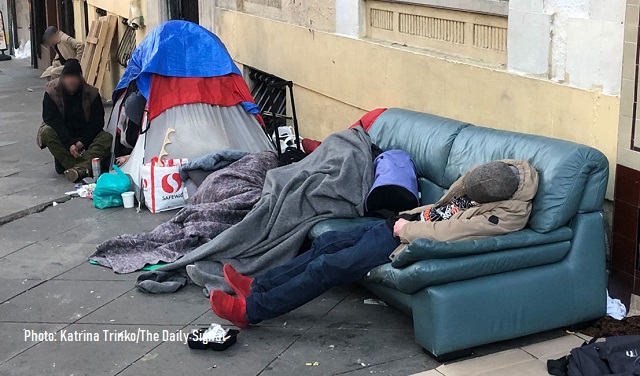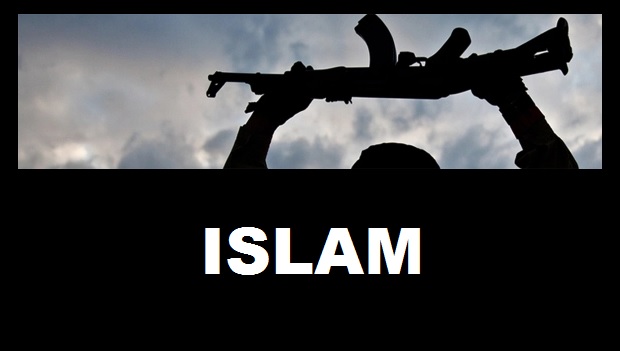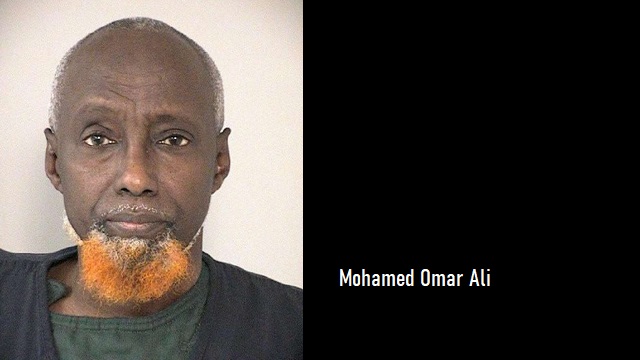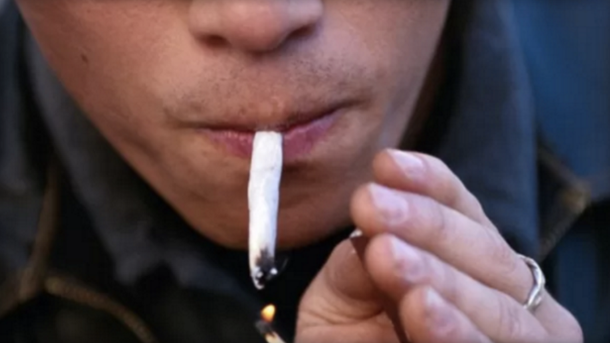Tents, Homelessness, and Misery: 9 Things I Saw in San Francisco

SAN FRANCISCO—Call me a poop skeptic.
After years of reading about the alleged horrors of San Francisco, I decided I wanted to see for myself if the City by the Bay was really in such dire conditions.
I’d grown up 30 miles south of San Francisco, occasionally popping in for field trips or shopping or sightseeing. Sure, the city had always had homeless people, but the conditions I read about—needles everywhere, “poop maps” documenting the location of human feces—seemed absurd.
How bad could it actually be in one of America’s most famous cities?
In these trying times, we must turn to the greatest document in the history of the world to promise freedom and opportunity to its citizens for guidance. Find out more now >>
Could one of the most famously liberal cities in the nation have disintegrated into disaster?
In 2009, I’d moved away from California. In the decade and change since, San Francisco has undergone a radical transformation. A new wave of top Silicon Valley companies—Twitter, Uber, Facebook—opened headquarters or offices in the city. And while San Francisco hadn’t ever been inexpensive, housing costs soared, with the median housing price more than doubling since 2010.
The 49ers, a football team, retained “San Francisco” in their name, but left famed Candlestick Park, now demolished, for Santa Clara, a California town south and in the middle of Silicon Valley—although San Francisco did gain the Golden State Warriors, a basketball team.
Uber and Lyft, which first came to San Francisco in 2010, now dominate ride-sharing services, their drivers swooping up and down the city’s famous hills.
Yet one change hadn’t occurred: The city has proudly remained a liberal bastion.
Home to House Speaker Nancy Pelosi’s congressional district, San Francisco is reliably and overwhelmingly blue in every election (with perhaps a few votes going to the Green Party).
In just the past year, the city’s Board of Supervisors declared the National Rifle Association to be a “domestic terrorist organization,” and the school board voted first to paint over, and then to hide, a mural of George Washington in one of the city’s high schools—a mural, incidentally, painted by a leftist who strove to show both Washington’s greatness and flaws.
Such actions are just par for the course for San Francisco, a city of more than 884,000 that in the past decade also banned fast-food restaurants from including toys with most children’s meals; prohibited city-funded travel by local employees to 22 pro-life states; raised the minimum wage from $9.79 to $15.59 an hour; and, after banning plastic bags in 2007, first set a 10-cent fee for each nonreusable bag at stores, and then a 25-cent fee per bag.
Yes, leftist insanity has long been the norm for San Francisco. But the liberal would-be-utopia had once been seen as a great city, not a filthy environment full of struggling people.
In a tweet in December, President Donald Trump wrote: “Nancy Pelosi’s district in California has rapidly become one of the worst anywhere in the U.S. when it come[s] to the homeless and crime. It has gotten so bad, so fast.”
https://twitter.com/realDonaldTrump/status/1210183406904074240?ref_src=twsrc%5Etfw%7Ctwcamp%5Etweetembed%7Ctwterm%5E1210183406904074240&ref_url=https%3A%2F%2Fwww.dailysignal.com%2F2020%2F01%2F13%2Ftents-homeless-and-misery-9-things-i-saw-in-san-francisco%2F
Showing it wasn’t just some “right-wing conspiracy” that San Francisco was falling apart, Oracle, one of the huge tech companies in the region, announced in December that its annual OpenWorld conference was going to Las Vegas for the next three years—costing San Francisco an estimated $64 million in potential revenue. An email from the San Francisco Travel Association, obtained by CNBC, mentioned “poor street conditions” as a factor.
So two days before Christmas, I left my parents’ house and made my way over to San Francisco.
I wanted to see for myself what conditions were really like. Was the middle class being driven away? Was the city as liberal as its politicians suggested? How many people were living on the streets?
Twenty-two thousand steps and four Uber and Lyft drives later, here’s what I saw.
1. Tents on Sidewalks
Before arriving in the city, I’d read that the Tenderloin neighborhood—just blocks from a major mall and retail area—is one of the worst.
Sure enough, as soon as I drift away from the retail and go a couple blocks into the Tenderloin, things get, well, smelly.
To my surprise, there are tents everywhere in the neighborhood. Years ago, during the Occupy Wall Street movement, I’d visited an Occupy encampment in Boston.
This seemed similar, although there is one key difference. In Boston, the tents were set up in a park. In San Francisco, the tents are openly obstructing the sidewalk—and not just on one block.
In the course of my day, I see several blocks like this clustered in the Tenderloin neighborhood and vicinity.
Some are just a block or two away from a police station. San Francisco’s new district attorney, Chesa Boudin, told the ACLU in a candidate questionnaire: “Crimes such as public camping, offering or soliciting sex, public urination, blocking a sidewalk, etc. should not and will not be prosecuted.”
I also notice something that I hadn’t seen much during my years in New York City and Washington, D.C.: homeless women, although far fewer than homeless men.
Nationally, homelessness increased by 2.7% in 2019, according to the Department of Housing and Urban Development. “Homelessness in California is at a crisis level,” HUD Secretary Ben Carson said in a formal statement.
Residents of San Francisco likely agree: Three-quarters of respondents to a survey said homelessness in the city was getting worse, and a little over half mentioned it as a top issue, according to a 2019 report from the San Francisco Office of the Controller.
2. 24-Hour Public Restrooms
In 2019, San Francisco decided to try keeping three public restrooms open 24 hours a day in the worst areas. It’s not cheap—to keep them clean, one attendant is present during daytime hours and, presumably for safety, two are present at night.
“History has shown that without attendants, public toilets in some of San Francisco’s most challenging neighborhoods are used for drug activity and prostitution, and become targets of vandalism,” writes the San Francisco Chronicle’s Phil Matier.
Matier also did the math: After looking at the cost of funding the toilets and the amount of times the toilets were used at night, he calculated each restroom use cost the city $28.52.
In addition to three 24/7 toilets, another 21 public toilets are available at certain hours, funded by the city. “The popular program … provides an alternative to using our streets and sidewalks as a toilet,” states the San Francisco Public Works website.
The toilets advertise that people can dispose of needles there, another sign of San Francisco’s relaxed approach to drugs. Thomas Wolf, a former drug addict who lived on the streets of San Francisco for a few months in 2018, is among those now advocating the city change its approach toward drugs.
Wolf “thinks the city is too wedded to harm reduction—making it safer to use drugs—rather than encouraging people to stop using,” the Chronicle reported in December. “He said he was offered free, clean drug paraphernalia by outreach workers, but doesn’t remember ever being offered a treatment bed or even being asked whether he wanted help quitting. Not once.”
Wolf, who has ceased using drugs and now serves on San Francisco’s Street-Level Drug Dealing Task Force and works for the Salvation Army’s Railton Place as a case manager and life skills coach, estimated that 90% of the homeless he lived with in Tenderloin and the adjacent South of Market neighborhood were addicted to drugs or alcohol.
“With harm reduction, the whole point is to use less while respecting your civil liberties,” Wolf told the Chronicle. “When I was out there homeless and leaving my needles in the street and defecating in the street and urinating in the street, was I protecting your civil liberties?”
3. Washing Sidewalks
Walking around the Tenderloin neighborhood in the morning, I encounter workers washing a sidewalk—and asking homeless people to move.
A worker sprays water right up to the brink of a homeless man’s stuff on the sidewalk. The homeless man, who is shoving his belongings into a bag or backpack, starts shouting at the worker, saying (and I’m editing this since we’re a family news outlet), “The f—, man?”
He keeps shouting, bellowing sentiments along the lines of “Who the f— do you think you are, f—ing my stuff, man?” as he continues to pack up.
In early December, the Tenderloin Community Benefit District and San Francisco Supervisor Matt Haney announced the beginning of weekly power-washings in the district, instead of monthly.
David Elliott Lewis, a local who is a community organizer, said, per the press release: “Even though seeing human and animal feces on our sidewalks is a common occurrence, I find it upsetting and disturbing every single time.”
According to RentHop.com, “Tenderloin has been on a winning streak for the ‘poopiest neighborhood’ contest for the past three years. The neighborhood saw 8,644.2 animal/human waste incidents per square mile in 2017, 7,722.8 in 2018, and 6,887.9 so far in 2019.”
Washing sidewalks is hardly the only way the city is addressing the crisis. In the past decade, San Francisco has been on a spending spree to help the homeless.
“Between 2011 and 2012, SF spent $157 million on homeless services. By the 2015-2016 fiscal year, it was up to $242 million. In the most recent 2019-2020 budget proposals, the figure hit more than $364 million. But the consensus remains that more is needed,” reports Curbed San Francisco, which estimates the homeless population now could be as high as 17,600.
4. Tourist Areas
What’s going on with the tourist areas, attractions that long have drawn people from around the country and the world to San Francisco’s shores?
“The loveliness of Paris seems somehow sadly gay/The glory that was Rome is of another day/I’ve been terribly alone and forgotten in Manhattan/I’m going home to my City by the Bay,” Tony Bennett famously warbled in “I Left My Heart in San Francisco.”
But local business owners are concerned tourists aren’t so tempted these days to explore what was once dubbed the “Paris of the West.”
For years, Pier 39—a mix of kitschy shops, restaurants, a carousel, and the odd street entertainer—has been a top tourist destination. Now, businesses fret, times are a-changing.
“We saw a pretty sharp decline since [2016-2017],” Brian Hayes, who owns seven shops and kiosks on the pier, told ABC7 (KGO-TV). “A lot of it is attributed to the homeless.”
“I know myself I’ll go on vacation, I’ll spend more money, but I have to have a good experience and I don’t want to have to look at the homeless and I don’t want to have to see needles on the ground and human feces. It’s not where you want to go on vacation,” Sandra Fletcher, president of Simco Restaurants, which owns five restaurants on the pier and also is facing more trouble drumming up business, told ABC7.
The day I am there, Pier 39 appears to have its usual hustle and bustle. A pack of people gather around an entertainer boasting that he can pull out the balloon he’s swallowed. A kid shrieks on a bungee flying ride.
In a store that sells products only for left-handed people, customers browse. The women’s restroom is decently clean, given that it’s a free public one in a high-traffic area.
A little outside Pier 39, I see a man in a wheelchair gliding along, plaintively asking people if they could help him out. He wears a 49ers cap and a red scarf and a checked sports coat, which I hope keeps him warm in this neighborhood right on the water.
In the few blocks between the Pier and Fisherman’s Wharf—another frequent tourist stop, essentially a line of bayside restaurants and food counters selling seafood—I notice one man sleeping on the ground.
In the area around Fisherman’s Wharf, souvenir shops sell swag and gifts that capitalize on the city’s liberal reputation:
I also browse Union Square, rimmed by some of the top shopping destinations of San Francisco: a gigantic, eight-story Macy’s, a Saks Fifth Avenue boasting of carrying “faux fur” in one of its windows, a Tiffany’s with sparkling jewelry in its whimsical Christmas displays, and a sleek Apple Store. A Christmas tree is lit in the square, and an ice skating rink is open for Californians wistfully wanting to capture some taste of a white Christmas.
About a week before my visit, Union Square was where San Francisco strained to restore its reputation. On the heels of the news of the Oracle convention’s move to Vegas, Mayor London Breed declared that San Francisco is a “world class city” and pledged further steps to address homelessness.
Yet as the Chronicle’s Matier noted, Breed’s comments in Union Square came at the same time that “an image of a man with his pants around his knees defecating in a [San Francisco] Safeway aisle was rocketing around the internet and TV.”
For San Francisco, the Oracle convention wasn’t even the first blow. In 2018, tourism and convention bureau SF Travel announced that a medical association, never named, was looking for another location for its conferences after 2023, despite holding the gatherings in the city since the 1980s.
“Postconvention surveys showed their members were afraid to walk amid the open drug use, threatening behavior and mental illness that are common on the streets,” reports the San Francisco Chronicle.
I see a couple of homeless people around Union Square, but nothing unusual for an urban area. The Union Square neighborhood effectively borders the Tenderloin, however, meaning a confused tourist could easily end up there.
5. A Church for the Homeless
At lunchtime, I pop into a church—one with the glorious architecture, high ceilings, and impressive art characteristic of so many older Catholic churches in the United States.
As the church’s bells chime, the sound of a vigorous snorer fills the lulls in between.
St. Boniface Church, in the Tenderloin neighborhood, allows the homeless to sleep in the pews every weekday through a nonprofit program called the Gubbio Project.
Around since the 1860s, the parish originally was the religious home of Germans in the city. The current church was built in 1902, and although it escaped the 1906 earthquake, it was ravaged by the subsequent fires. Rebuilding was completed in 1908.
“The Gubbio Project uses the back two-thirds of the sanctuary; the church uses the front one-third to celebrate the daily Mass,” the program states on its website. “This sends a powerful message to our unhoused neighbors—they are in essence part of the community, not to be kicked out when those with homes come in to worship. It also sends a message to those attending Mass—the community includes the tired, the poor, those with mental health issues and those who are wet, cold and dirty.”
The day I arrive at St. Boniface’s, the front of the church glitters with Christmas decorations.
During the Communion service—there isn’t a Mass that day—the church is mostly quiet. During one brief moment, someone starts babbling, only to be told to be quiet by others. When I look back, I don’t see any of the homeless people actively participating in the religious rites.
After the service, I explore the rest of the church. Most of the wooden pews—with no padding for comfort—are occupied by a sleeping person. Three people are lying on the floor in the back.
I speak briefly to Michael Bonner, a new employee of the Gubbio Project. When I ask Bonner how the homeless can be helped and what should be done, he speaks of a lack of motivation, of people “going down a path of not caring anymore” instead of having “a fire burning in you.”
Bonner talks about the need for a work ethic, and how it’s too simplistic to say the homeless problem is an effect of the city’s expensive housing. But he’s also adamant that people need help: “We just can’t give up on the willing,” he says.
I ask him if the homeless people he encounters have loved ones or families who could help. Bonner says most of them are “probably embarrassed to go home” because “you don’t want to hear it from your family anymore” after presumably failing in previous tries to get off the streets.
6. No Place for the Middle Class
One of the big tensions in San Francisco—and in the wider Bay Area region—in recent years has been the perceived gulf between the affluent and everybody else. As my colleague Jarrett Stepman has chronicled, California increasingly is becoming a place for the poor and the rich, not the middle class.
So out of curiosity, I walk over to Twitter’s headquarters, just a few blocks away from St. Boniface’s, passing City Hall. Twitter is just one of several companies—others include Salesforce, Facebook, Square, and Uber—that have come to San Francisco in recent years.
No doubt the city has seen a business boom: “Citywide, the unemployment rate fell from 9% in 2011 to 2.6% this year, and the number of jobs grew from 543,600 in 2011 to an estimated 730,900 last year, according to state data,” reports the Chronicle.
The area around Twitter is quiet the day I am there, and there is no sign of anyone living—or begging—on the streets. Beneath Twitter’s headquarters is a bougie food hall and a grocery store that, incredibly, makes Whole Foods seem like an affordable option.
In the food hall, I stop for lunch at The Organic Coup—which was basically everything you’d expect from a shop in a Francisco food hall. It brands itself as the first “organic fast food restaurant” and urges me to “taste the revolution.”
Apparently, fast-food prices don’t apply in the revolutionary era: My lunch of chicken strips and tater tots, and nary a drink, costs $12.81.
However, the food hall offers plenty of options beyond organic tater tots, including—I kid you not—caviar.
One of my Lyft drivers, whose name I’m not using because I didn’t get his permission to quote him on the record, calls San Francisco a “ridiculous city.”
As we pass a gas station, where regular gas is going for $3.99 a gallon, he notes in frustration that gas where I live is probably significantly cheaper.
My Lyft driver also complains that affordable housing is a joke, saying it means something like a $900,000 for a two-bedroom condo instead of a million. The driver, who moved from Los Angeles to San Francisco 10 years ago, blames San Francisco residents for not allowing more housing, noting it had created a situation where people made a fortune on their own homes’ going up in value but where their children could not afford to buy a home and stay.
The Lyft driver’s attitude isn’t an anomaly: A 2019 survey conducted by the controller’s office found that 35% of respondents were somewhat or very likely to leave the city in the next three years, including 48% of those 35 or younger.
Although the city notes that the 35% number is in line with statistics for the past 14 years, data suggests people aren’t merely talking about leaving the city. According to real estate firm Redfin, San Francisco was second only to New York City among American cities with the dubious distinction of losing the most residents in the third quarter of 2019, the most recent period tracked.
And my driver isn’t wrong to be concerned about housing prices. “In 2010, the median sale price for a single-family house in SF came in at $751,000 … But by October of 2019, the California Association of Realtors estimated that a median-priced SF house sold for $1.65 million, more than double the value of a home the same time ten years ago,” reports Curbed SF.
7. Life on the Sidewalk
Toward the end of the day, I speak to Anthony Rodriguez, who is sitting on a box next to a man smoking in a tent. Next to the tent is a sofa.
Neither Rodriguez nor the tent man, who doesn’t want to be quoted, knows where the sofa originated.
Rodriguez is from Oakland, a city across the Bay, but says he’s been in San Francisco for about a month.
“That’s one thing about San Francisco,” he observes. “You won’t starve.”
The 51-year-old says he’s been homeless since 2015, when his mother died, and that he had been homeless at times prior to that as well.
Rodriguez tells me a complicated story I have trouble following—and entirely believing—about being discharged from a hospital too soon for an injury he incurred on his knee.
“I started drinking again because it’s cold out,” he mentions.
Overall, he likes San Francisco, especially because he meets so many people.
“If I’m lonely and sad, I always like to come out here,” Rodriguez, who doesn’t want his photo taken, tells me.
He says he has seven children, and that he’s outlived two of his ex-wives. It doesn’t appear that he is in regular touch with any family now.
The company he finds in San Francisco “fills a void for me,” he says, noting that he’s less depressed here.
“The police will wake you up,” Rodriguez says, but adds that it’s usually OK to just go across the street when that happens.
8. Poop and Needles
So am I still a poop skeptic?
After walking all over the city, I’ve seen only one instance of poop (in the Tenderloin neighborhood) and one possible needle (I wasn’t anxious to get close enough to verify)—despite the fact that I kept diligently studying the sidewalk to see if I would spot either feces or needles.
My anonymous Lyft driver, however, says that he regularly sees people shooting up heroin, and notes you can spot the dealers by noticing who has backpacks.
#SanFrancisco politicians have been among the most vocal proponents of reducing inequality… Perhaps, their struggle should start closer to home. https://t.co/4nzW2iNLvf pic.twitter.com/uVqDMHfQre
— OpenTheBooks (@open_the_books) August 22, 2019
“In San Francisco’s Tenderloin neighborhood, ‘Tucker Carlson Tonight’ producers filmed drug dealers operating in broad daylight. In the South of Market (SoMa) neighborhood, where many apartments rent for nearly $4,000 a month, the sidewalks were lined with used syringes,” writes Fox News’ Charles Couger.
And in the course of my research, I encounter Twitter accounts that portray a dirtier reality than what I happened to observe:
"Giant human feces against the wall near the main door of 701 Minna. This is the third time I've reported this shit, and all the tickets have been closed. But this shit is still here." (SOMA, D6) https://t.co/FUpg94ep7P pic.twitter.com/PbgorJF4si
— PoopScoop: Get the Scoop on Poop (@PoopScoopSF) January 3, 2020
"Huge human poop left by homeless tweaker is a health hazzard please clean ASAP as I almost stepped in it with my broken foot cast" (SOMA, D6) https://t.co/3qKOdl7Dj0 pic.twitter.com/9n7tiSwpf7
— PoopScoop: Get the Scoop on Poop (@PoopScoopSF) January 3, 2020
Needles cover the sidewalk Across the st from Mikes Bikes, at 1220 Howard st. @311.
Small business are domed under these conditions. No one wants to come here, walk threw this sh*t & needles, graffiti everywhere,get your car broken into while you get your bike serviced. pic.twitter.com/YzeZt0fSUS
— CleanUpSoMaWest (@CleanUpWestSoma) December 4, 2019
More and more needles line the sidewalks of San Francisco
Average home value on this block is around 2 million.
That’s around $27,000 in taxes every year and your street looks like this…715 Clementina st @SF311 #filthySF #SF #needles #drugsareillegal pic.twitter.com/7bSCrRw2XN
— CleanUpSoMaWest (@CleanUpWestSoma) November 27, 2019
At the end of the day, the increased power-washing and presence of public restrooms show the city has a real problem with these issues. But if you’re thinking about a trip to San Francisco, I wouldn’t skip it on account of these matters—just make sure you know where the bad neighborhoods are, and be sure to avoid them if you’re concerned.
9. Misery
In the weeks since I visited San Francisco and started writing this article, I’ve caught myself often thinking about the homeless people I saw—from the man who was barefoot on the street in the Mission District, to those I saw on the sidewalks from my passing car, to the man rushing to pack up his belongings as a worker sprayed the sidewalk near him.
I don’t pretend to know the exact policy solution that will “solve” homelessness—although I hope to do further reporting and interviews this year at The Daily Signal to talk to experts who have insightful ideas on ways to help.
But any visitor to San Francisco can tell the current situation isn’t working—for tourists, for residents, and perhaps most importantly, for the homeless themselves.
No doubt, mental health and addiction, perhaps both in many or most cases, make helping the homeless while respecting individual rights uniquely challenging.
But as clichéd as the term is, it’s genuinely heartbreaking to walk through blocks of people, spending their lives on the streets, often seemingly in a drugged haze—and sometimes passed out entirely.
I can’t imagine tents provide much shelter against the chilly, Bay-driven winds of San Francisco, or that anyone who feels driven to defecate on the street is truly in his right mind.
Seeing this at Christmastime—when most of the country was on the cusp of days of joyful celebrations, ample family time, presents galore, and gourmet meals—was especially upsetting.
The status quo in San Francisco has a real human cost.
The left long has prided itself on having more compassion for, and solutions for, the poorest Americans than the right does.
But if one thing is clear when walking around San Francisco, it’s that this liberal bastion has absolutely failed some Americans who are struggling the hardest right now.
All photos in this article were taken by the author. In a few photos, faces have been blurred to respect privacy.
COLUMN BY
Katrina Trinko
Katrina Trinko is editor-in-chief of The Daily Signal and co-host of The Daily Signal Podcast. Send an email to Katrina. Twitter: @KatrinaTrinko.
RELATED ARTICLES:
Podcast: What It’s Like on the Streets of San Francisco
Jobs, Family, Future: Gov. Kristi Noem Shares What’s on the Mind of America’s Heartland
California Governor’s Proposed Budget Shows Just How Clueless He Is
A Note for our Readers:
This is a critical year in the history of our country. With the country polarized and divided on a number of issues and with roughly half of the country clamoring for increased government control—over health care, socialism, increased regulations, and open borders—we must turn to America’s founding for the answers on how best to proceed into the future.
The Heritage Foundation has compiled input from more than 100 constitutional scholars and legal experts into the country’s most thorough and compelling review of the freedoms promised to us within the United States Constitution into a free digital guide called Heritage’s Guide to the Constitution.
They’re making this guide available to all readers of The Daily Signal for free today!
GET ACCESS NOW! >>
EDITORS NOTE: This Daily Signal column is republished with permission. © All rights reserved.














